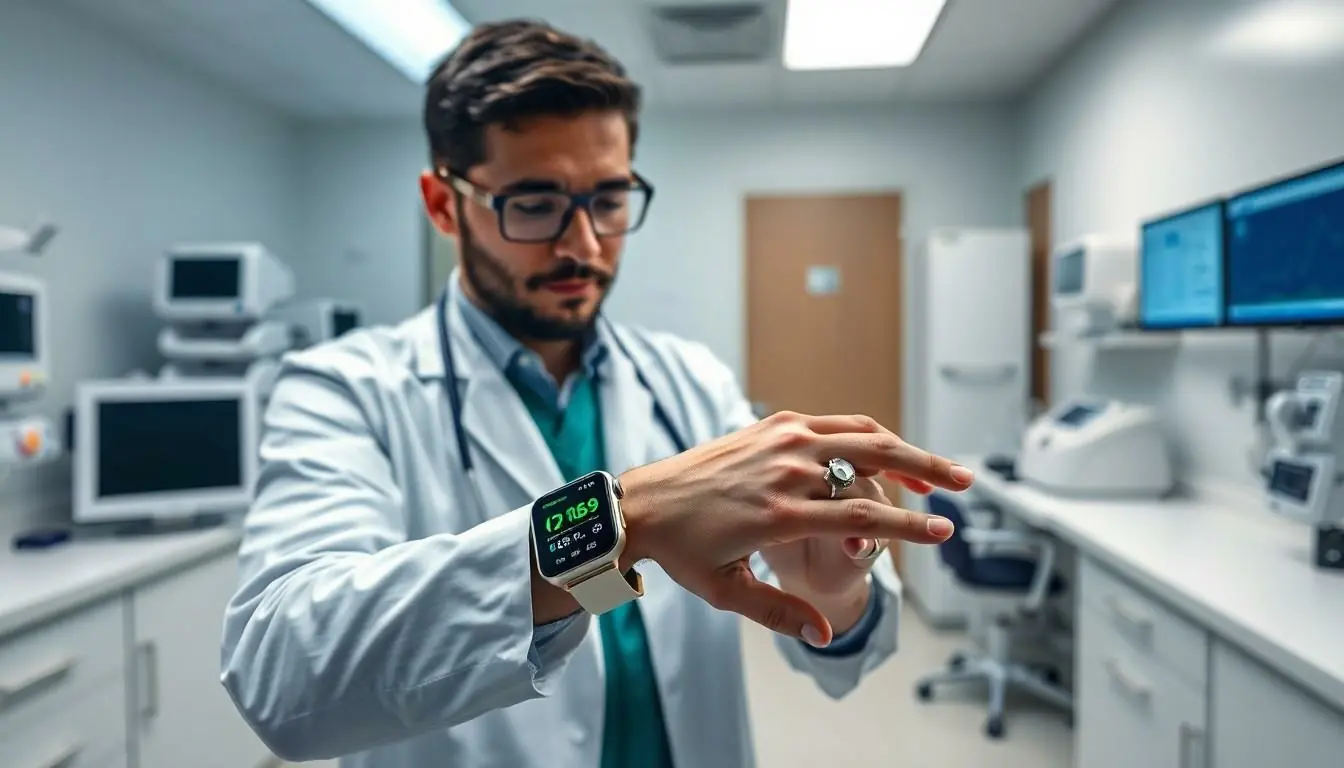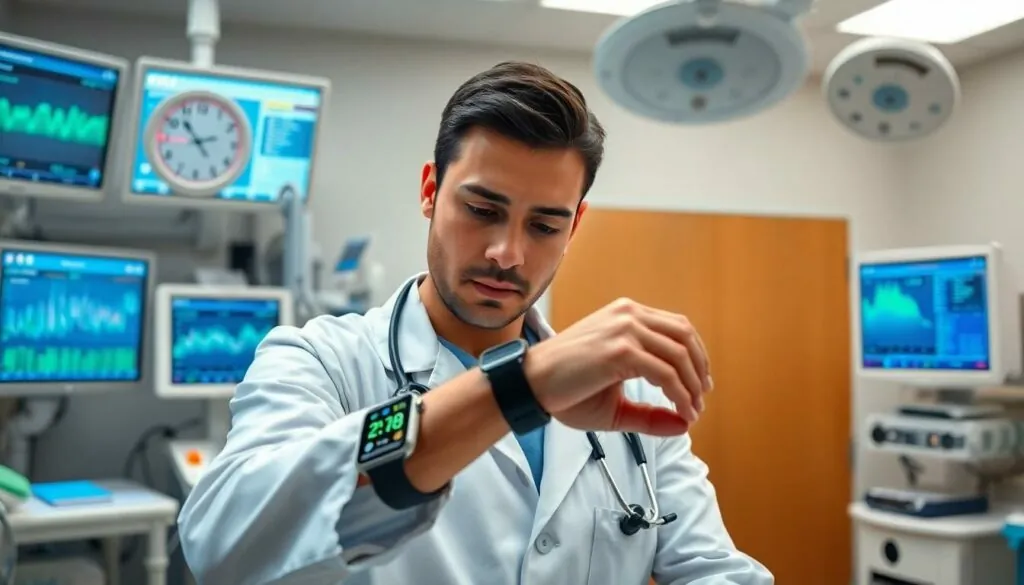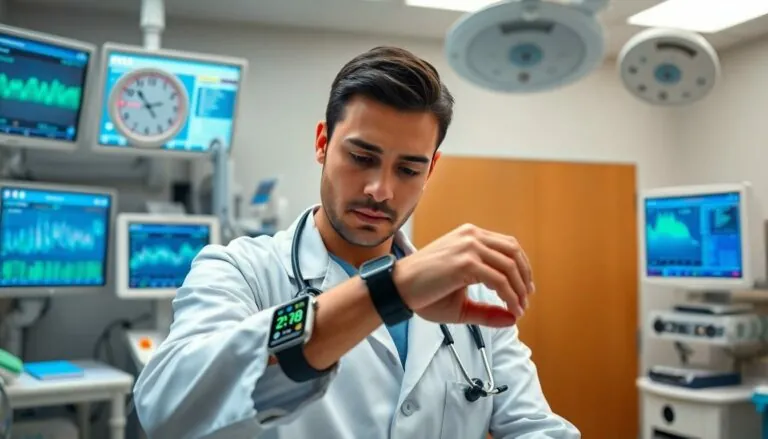Table of Contents
ToggleImagine a world where your doctor knows you better than your best friend. Thanks to the Internet of Things (IoT), that’s becoming a reality in healthcare. From smart wearables tracking your every heartbeat to connected devices sending real-time data to medical professionals, IoT is revolutionizing how we approach health and wellness.
Overview of IoT Healthcare
IoT healthcare integrates technology and medical devices to enhance patient care and operational efficiency. Smart wearables, like fitness trackers and smartwatches, continuously monitor vital signs and health metrics, offering valuable data for medical assessments. Connected devices enable remote patient monitoring, allowing healthcare providers to observe patients without in-person visits.
Data generated by IoT devices plays a pivotal role in personalized medicine. Medical professionals analyze this data, tailoring treatments based on individual needs and conditions. Chronic disease management benefits significantly. For instance, diabetic patients can manage their blood glucose levels through connected monitors that transmit readings directly to their healthcare team.
Security remains a critical consideration in IoT healthcare. Encryption protocols and secure data transmission ensure sensitive patient information stays protected from cyber threats. Compliance with regulations such as HIPAA safeguards data privacy and fosters trust between patients and healthcare providers.
The potential for predictive analytics in IoT healthcare is profound. By leveraging historical data from connected devices, algorithms can identify trends and forecast potential health issues. Early intervention becomes possible, improving patient outcomes and reducing emergency room visits.
In addition, IoT healthcare streamlines supply chain management for medical facilities. RFID tags and IoT sensors track inventory levels and equipment usage, minimizing shortages and waste. This efficiency not only reduces operational costs but also enhances the quality of patient care.
Overall, IoT healthcare signifies a new era of medical innovation and efficiency. Embracing technology transforms how healthcare providers and patients interact, yielding better health outcomes and more informed healthcare decisions.
Key Technologies in IoT Healthcare

IoT healthcare relies on various key technologies that enhance patient care and improve medical practices. Two significant components of this ecosystem are wearable devices and smart sensors.
Wearable Devices
Wearable devices gather crucial health data, enabling real-time monitoring of patients. Smartwatches and fitness trackers continuously track metrics like heart rate, activity levels, and sleep patterns. These wearables provide health professionals with immediate access to vital information. Patients experience greater engagement in their health management. Continuous data collection from these devices enhances personalized treatment plans, allowing for timely interventions. The market for wearable technology in healthcare is expected to grow, increasing opportunities for better patient outcomes.
Smart Sensors
Smart sensors serve as vital tools in IoT healthcare, collecting and transmitting health-related data effortlessly. These devices can monitor environments, physiological conditions, and medication adherence. Sensor integration with devices allows healthcare providers to track patient status remotely. Improved data accuracy leads to more informed decision-making. Sensors also assist in automating administrative tasks, streamlining operations in healthcare facilities. With capabilities to identify patterns and anomalies, medical professionals can enhance their response strategies to patient needs.
Benefits of IoT in Healthcare
IoT technology significantly enhances healthcare delivery, offering numerous advantages for both patients and providers. Key benefits include improved patient monitoring and increased efficiency, leading to notable cost savings.
Enhanced Patient Monitoring
Wearable devices facilitate continuous tracking of vital signs and health metrics. Patients can wear fitness trackers or smartwatches that gather real-time data on heart rate, activity levels, and sleep patterns. Medical professionals receive this data instantly, enabling quick response to any anomalies. Remote monitoring systems support chronic disease management, allowing healthcare providers to adjust treatment plans based on up-to-date information. Enhanced patient engagement occurs as individuals take an active role in their health, contributing to better overall outcomes.
Improved Efficiency and Cost Savings
Operational efficiency in healthcare increases significantly with IoT integration. Smart sensors streamline inventory management, automatically tracking equipment usage and supplies. As a result, facilities reduce waste and avoid shortages, ensuring necessary resources are available. Improved workflows lead to lower operational costs, enabling healthcare institutions to allocate funds to other vital areas. Furthermore, remote consultation reduces the need for in-person appointments, saving time for patients and clinical staff alike. Overall, these advancements create a more cost-effective healthcare system.
Challenges and Concerns
IoT healthcare presents several challenges that stakeholders must address to maximize its benefits. Data security and privacy remain paramount, while integration with existing systems poses significant hurdles.
Data Security and Privacy
Ensuring data security and privacy is critical for IoT healthcare. Sensitive patient information requires robust encryption methods. Healthcare organizations face threats from cyberattacks, making compliance with regulations like HIPAA essential. Data breach incidents undermine patient trust, impacting overall adoption rates. Regular security audits help identify vulnerabilities, while employee training enhances awareness of potential threats.
Integration with Existing Systems
Integrating IoT devices with existing healthcare systems proves challenging. Compatibility issues often arise between newer technologies and legacy systems. Healthcare providers must invest in infrastructure upgrades to facilitate seamless operations. Training staff on using new technologies effectively is crucial for smooth transitions. Moreover, interoperability between devices can enhance the flow of information, improving patient care and operational efficiency.
Future Trends in IoT Healthcare
Emerging trends in IoT healthcare indicate a significant shift towards more sophisticated and personalized medical care. Increased integration of artificial intelligence (AI) enhances data analysis from connected devices, allowing for better predictive analytics. AI-driven insights can assist healthcare providers in anticipating health issues before they become critical, thus improving patient outcomes.
Advancements in telemedicine continue to evolve. Providers use IoT devices to facilitate remote consultations, allowing patients to receive care without leaving their homes. Access to specialists increases, particularly in rural areas where healthcare resources may be limited.
Another important trend involves the growth of smart home health technology. Devices like smart pill dispensers and connected health monitors provide added layers of support for patients managing chronic conditions. These devices remind patients to take medications and send alerts to caregivers if issues arise.
Wearable technology remains at the forefront. Market forecasts predict significant growth in wearable devices like smartwatches and health trackers. These gadgets continuously monitor vital signs, enabling users and healthcare professionals to stay informed about health status in real-time.
Enhanced security protocols take center stage as cybersecurity threats increase. Strong encryption methods and compliance with international regulations are critical to protecting sensitive patient information. Organizations increasingly invest in robust security measures to maintain patient trust.
Interoperability emerges as a focused goal. Seamless integration of new IoT devices with existing healthcare systems significantly improves data sharing across platforms. Healthcare providers prioritize upgrades and staff training to ensure smooth transitions and operational efficiency.
Overall, these trends paint a promising future for IoT in healthcare, suggesting a transformation in patient care, operational efficiency, and medical innovation.
The integration of IoT in healthcare is revolutionizing the way medical professionals interact with patients. With continuous monitoring and real-time data access, healthcare providers can deliver personalized care that significantly improves patient outcomes.
As technology advances and the market for wearable devices expands, the potential for enhanced patient engagement and operational efficiency continues to grow.
However, addressing data security and interoperability challenges remains crucial for successful implementation. The future of IoT healthcare looks promising, with innovations poised to further transform the healthcare landscape and create a more efficient system for all.







